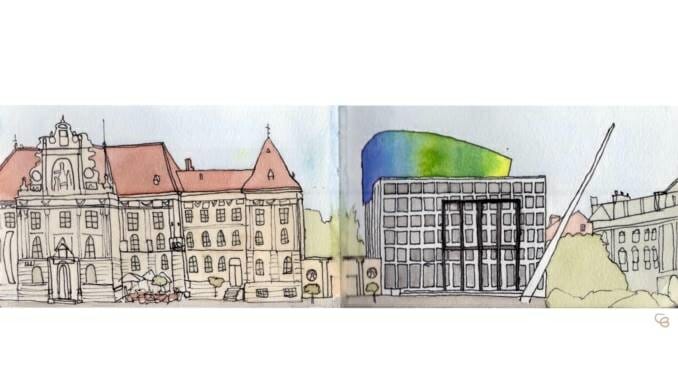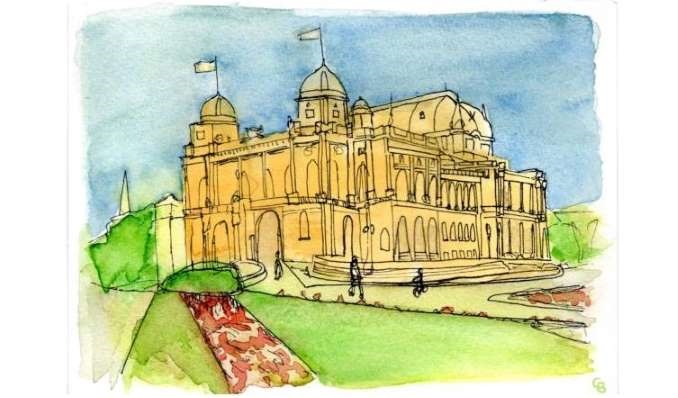Travel Sketches: Zagreb, Croatia
Illustrations by Christine Bednarz
The Museum of Arts and Crafts and the University of Zagreb’s Music Academy form the Republic of Croatia Square’s western boundary.
When the weather and my schedule cooperate, I leave my apartment in Zagreb, the capital of Croatia, around eight o’clock in the morning and head to an open-air café terrace to drink coffee the way Croats do — without laptop, earphones, and work to-do list. I prefer to take a seat on the northeast corner of the Trg Republike Hrvatske, or Republic of Croatia Square in the city’s Green Horseshoe of parks. From my table’s vantage, the Croatian National Theater dominates the space. On the far side of the quad, the Museum of Arts and Crafts and the University of Zagreb’s Music Academy form the western boundary.
This square is the synapse that connects my neighborhood to the city center. It is also a junction where you irrefutably know you are in a Central European capital. Both the architecture and customs belong to another era … and, at the same time, are modern and Continental without trying.
 The Neo-Baroque Croatian National Theater opened in 1895.
The Neo-Baroque Croatian National Theater opened in 1895.
-

-

-

-

-

-

-

-

-

-

-

-

-

-

-

-

-

-

-

-

-

-

-

-

-

-

-

-

-

-

-

-

-

-

-

-

-

-

-

-








































